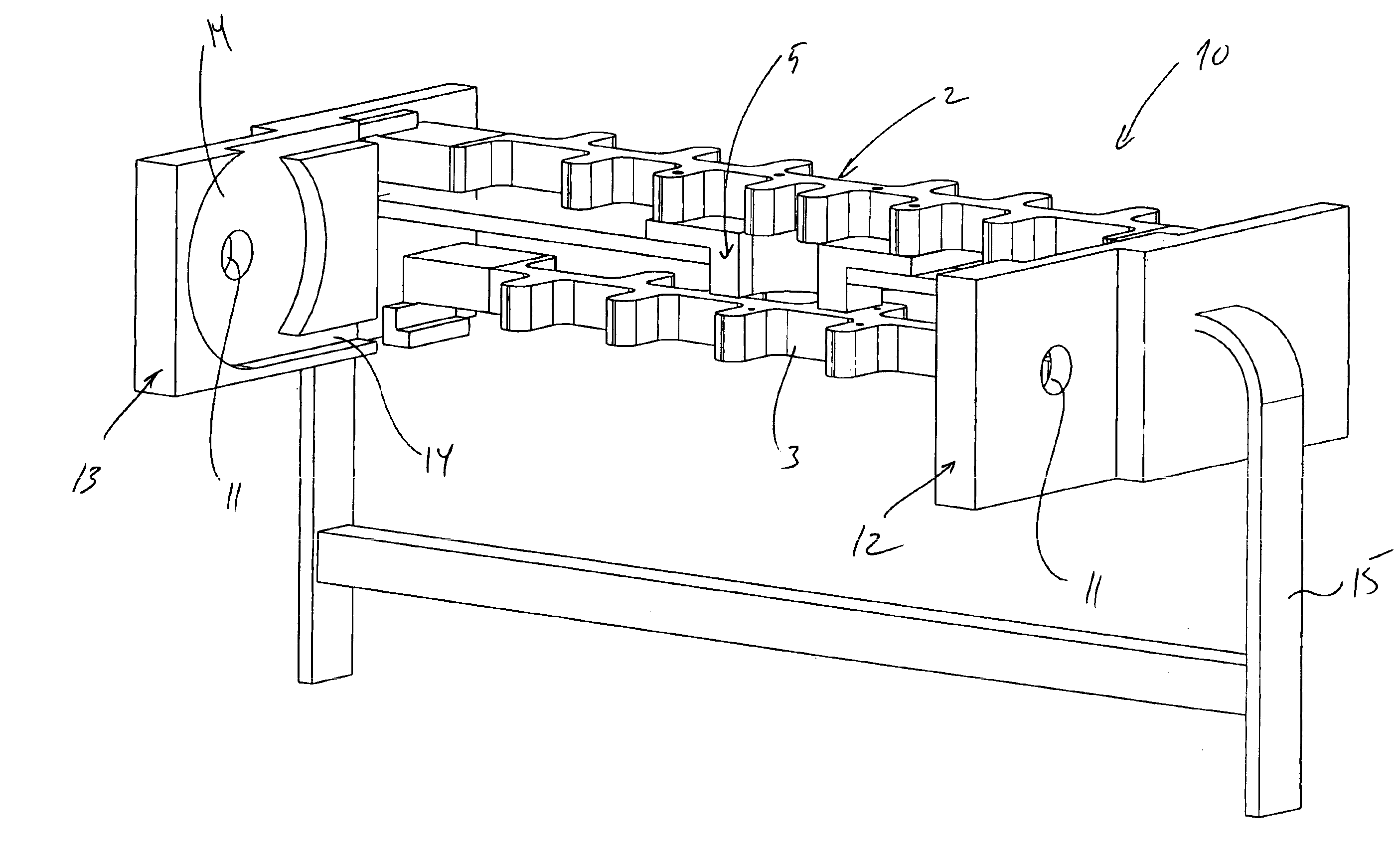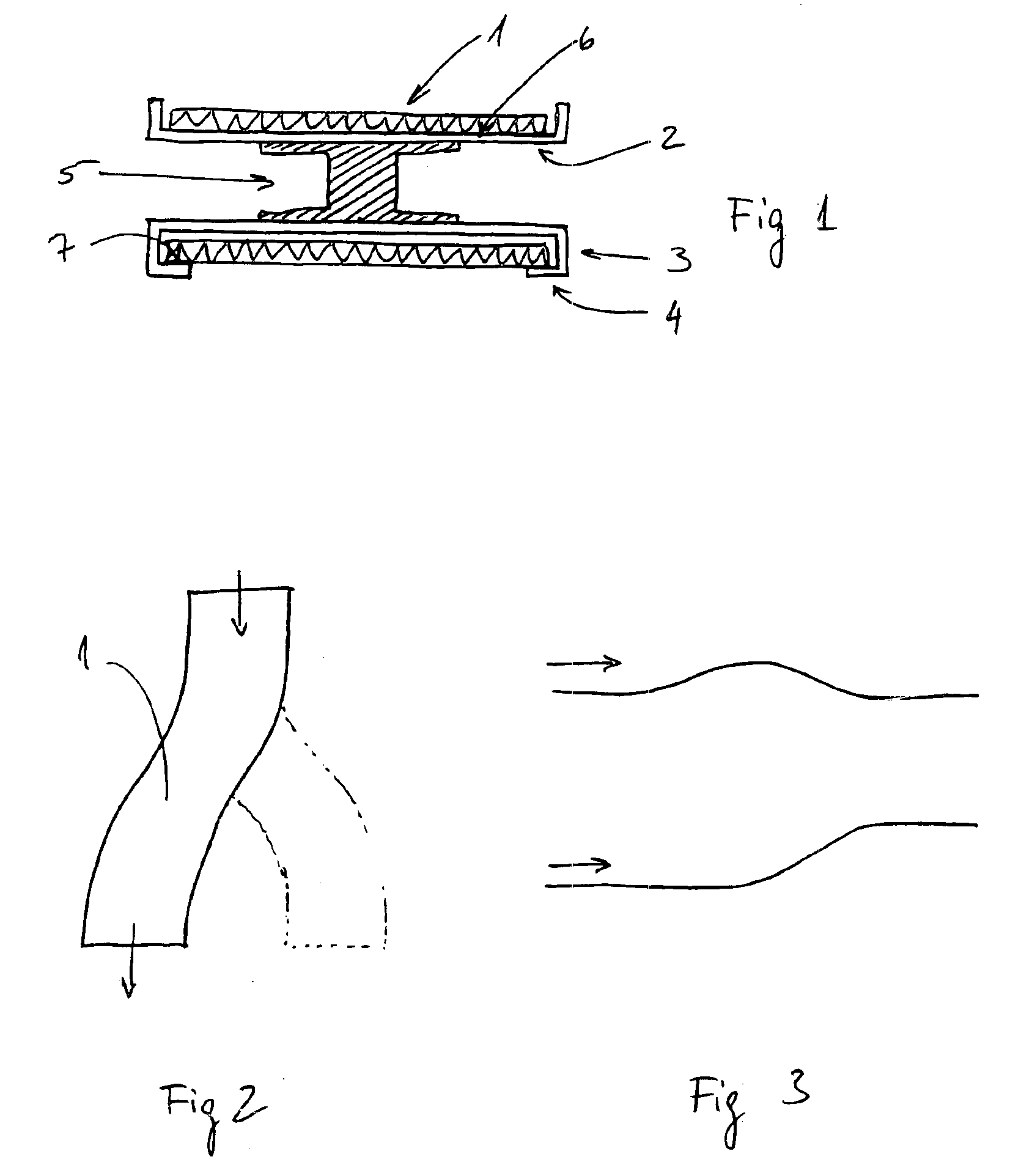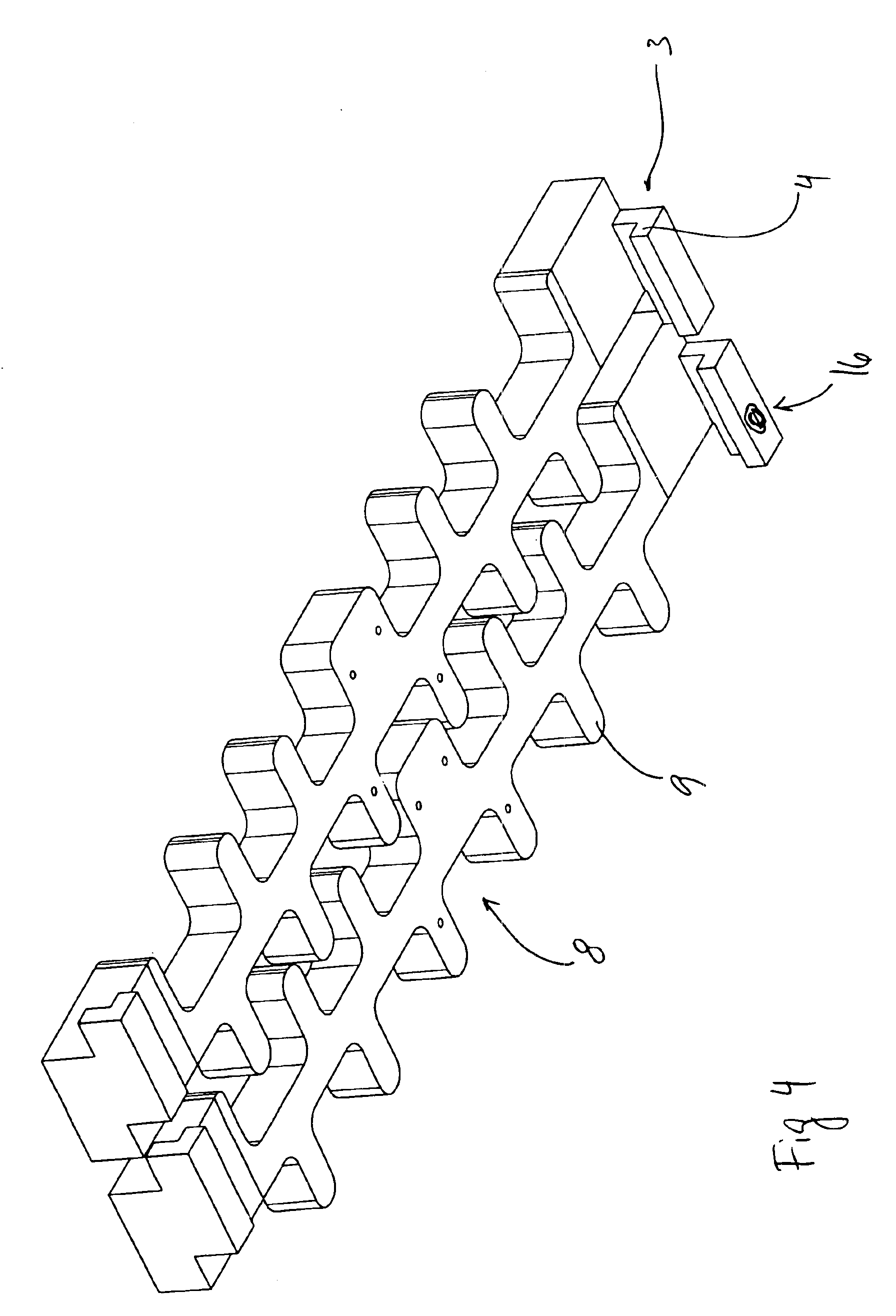Flexible conveyor
a conveyor and flexible technology, applied in the direction of conveyors, conveyor parts, transportation and packaging, etc., can solve the problems of unfavorable transportation of passengers, so as to avoid unfavorable transportation and avoid unfavorable transportation. , the effect of reducing the amount of slack
- Summary
- Abstract
- Description
- Claims
- Application Information
AI Technical Summary
Benefits of technology
Problems solved by technology
Method used
Image
Examples
Embodiment Construction
FIG. 1 schematically illustrates a cross-section through an inventive conveyor according to the invention. On the upper side of the structure the conveyor belt 1 is supported by conveyor belt support means 2. On the underside of the conveyor, conveyor belt guidance means 3 are provided. These guidance means 3 comprise a flange 4 which supports the conveyor belt when it is travelling back to the beginning of the conveyor. The load-carrying structure 5 comprises a load-carrying chain consisting of a number of interconnected chain links. The chain links in the load-carrying structure are interconnected in such a way that they can articulate in all three dimensions.
As is evident from the schematic presentation in FIG. 1, the conveyor belt support means as well as the conveyor belt guidance means are exposed to wear. When the conveyor belt for example is of the type SNB Flexible Belts® provided by uni-chains A / S, Denmark, the belt is advantageously made from a mouldable plastic material....
PUM
 Login to View More
Login to View More Abstract
Description
Claims
Application Information
 Login to View More
Login to View More - R&D
- Intellectual Property
- Life Sciences
- Materials
- Tech Scout
- Unparalleled Data Quality
- Higher Quality Content
- 60% Fewer Hallucinations
Browse by: Latest US Patents, China's latest patents, Technical Efficacy Thesaurus, Application Domain, Technology Topic, Popular Technical Reports.
© 2025 PatSnap. All rights reserved.Legal|Privacy policy|Modern Slavery Act Transparency Statement|Sitemap|About US| Contact US: help@patsnap.com



